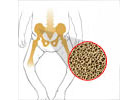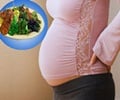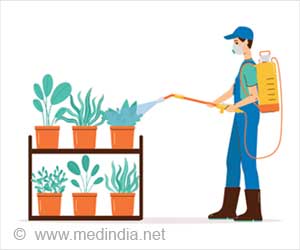India, which has twice the level of malnutrition compared to Africa, could introduce iron-enriched rice in school lunch meals to boost the health of anaemic children, suggests a global NGO.
According to the Canada-based NGO Micronutrient Initiative, "extruded" rice fortified with iron can improve the health of anaemic children.The fortification is done by powdering rice kernel and mixing it with high level of iron and reshaping it in the form of a rice grain through a process called extrusion.
"A meal containing just one grain of iron fortified rice mixed with 100 grains of normal rice can make all the difference," Luc Laviolette, Asia regional director of The Micronutrient Initiative, told IANS.
The NGO conducted a study on the benefits of the rice in an urban slum in Bangalore in cooperation with St John's National Academy of Health Sciences. The study found: "Extruded rice fortified with micronised ground ferric pyrophosphate (MGFP) has excellent sensory characteristics."
"Fed in a school lunch meal, it increases iron stores and reduces the prevalence of iron deficiency in Indian children," says the report, published in the American Society for Nutrition's journal.
It could be introduced in the form of tomato rice or mixed vegetable rice and is quite palatable, it said.
Advertisement
"We are already in talks to introduce iron-fortified rice in three rice eating states of Tamil Nadu, Karnataka and Andhra Pradesh," said Laviolette, who is hopeful the government will agree to supply the rice through the public distribution system so that it could reach more poor people.
Advertisement
In India, over 6,000 children below the age of five die every day mainly due to the lack of basic micronutrients like Vitamin A, iron, iodine, zinc and folic acid in their diet. An estimated 50,000 children are born deformed each year due to various vitamin and mineral deficiencies, according to studies.
The Micronutrient Initiative has urged the government to raise the allocation for its nutrition supplement programme to Rs.5.87-7.33 billion per year ($130-163 million) to target over 200 million children over the next five years.
"This would work out to about Rs.5.40 per capita per year, which is 50 times less than the estimated per capita yearly loss to GDP resulting from micronutrient deficiencies (Rs.284)," said Laviolette.
"We expect the new plan to be in line with India's 11th Five Year Plan (2007-12). It would involve scaling up some of the existing programmes for improving nutrition intake of children and young women," he said.
The additional budget would also help to step up awareness campaigns on the benefits of fortified foods.
"We have found that on an average people have not heard of micronutrients and do not understand the need for mineral and vitamin fortified products," he said. "But once people are told of the benefits, they react positively."
Laviolette said mineral-fortified wheat flour and children's supplementary diets could be given easily without changing eating habits.
Source-IANS
SRM










